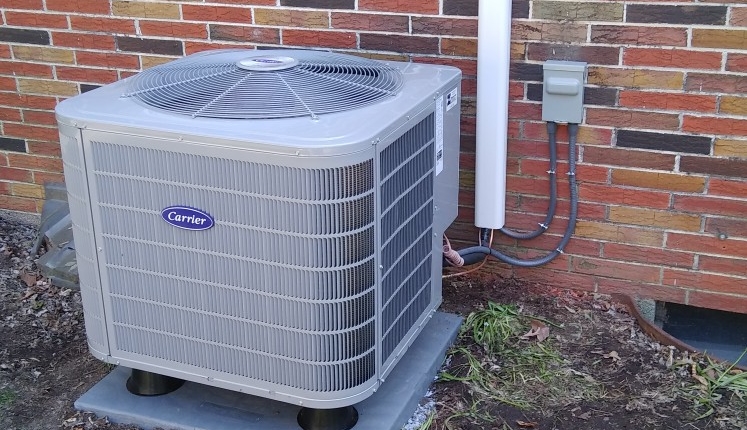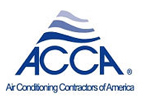Reasons for a Hot Second Floor and How to Cool It Down
Temperature differences from the first floor to a second floor can cause significant discomfort in your home. The most common rationale for a warmer second floor is that “heat rises”. Although somewhat true, this is far from the main culprit of an uncomfortable upstairs and there is plenty that can be done to even the temperatures in your 2-story home. Don’t wait until summer to correct this issue. If you’re wondering how to keep your upstairs rooms cool, read on.
First, Why Is the Second Floor Hot?
Many of our homes have air conditioning systems located in a basement or lower level with a thermostat in the first floor. Moving cool air from a basement all the way up to a second floor is a challenge. Conversely, an air conditioner or ductwork located in the attic can also be impacted by the hot temperatures of the attic. Regardless of the air conditioner’s location, the ducts that move the cold air in your home are critical to your comfort. If they are installed improperly, leaky, under or oversized the cool air will not move properly. And because many thermostats are located on the first floor of the home; this is where the temperature is being monitored.
Perhaps the biggest contributor to a hot second floor and general discomfort is due to poorly insulated and vented attics. On a hot summer day, our attics can reach a staggering 150° F which greatly affects what’s below. A large majority of attics in Central PA are under-insulated, which allows those high temperatures to push right into the living space. EnergyStar’s recommendation for an attic in the Greater Harrisburg area is an insulation value of R49 to R60, which equates to roughly 16.5” to 20” of blown-in insulation. It’s also critical to seal air leaks between the living space and the attic.
Attics also need to have proper ventilation. It’s important that the vents in the attic stay unblocked to allow air to move freely to keep mold from forming under the shingled roof.
Lastly, an upstairs that is too hot could also be due to your existing air conditioner that is unable to keep up. Proper sizing of an air conditioning system impacts the ability for it to provide adequate cooling to the whole home. Or maybe it has begun to show signs of failure because of the age of the system, this will also impact its ability to cool the second floor.
What Won’t Correct a Hot Second Floor?
Blasting the air conditioner might seem like your only option to get relief to the second floor. But this makes the first floor cold and uncomfortable. It also adds extra stress on the air conditioner which may result in higher electric bills.
What about installing a bigger system to overcome this shortcoming? An oversized air conditioner will not solve the problem. An air conditioner should be sized for the cooling needs of the conditioned space. An a/c system that is too big can cause issues with dehumidification, use more electricity, and can result in shorter system life.
How Can You Cool Your Second Floor?
So, how to cool the upstairs second floor, then? In most cases, there are plenty of ways to help ease the discomfort of a hot second floor. Starting with the easiest fix, try setting the air conditioners fan from ‘Auto’ to ‘On’ on the thermostat. More constant airflow allows for more hot air to recirculate back to the system. This fix is even more effective in newer, more efficient air conditioners which we will discuss later. Be sure to also keep return vents in the second floor free from obstructions.
Along the same topic of air circulation, installing and/or running ceiling fans can help move more air which will allow you to feel cooler while occupying a room.
There are almost always ways to correct ductwork as long as it’s accessible. If a duct system was installed with manual balance dampers, identify where the supply air is going and adjust the damper. Partially closing dampers to the first floor and fully opening dampers to the second floor can force more air upstairs. A professional HVAC contractor can measure and identify problems with ducts that might be restricting airflow.
Another common improvement to ducts that many homes in our area take advantage of is zoning. This is done with motorized balance dampers that open and close when either zone is calling for cool air. The first and second floors would each have their own thermostat to control the temperature automatically.
As mentioned before, sealing any air leaks between the attic and living space while adding enough insulation plays a major role in the comfort of your second floor. It’s also important to ensure the attic is properly ventilated by keeping vents clear. Installing an attic fan to provide additional relief to the attic can prove beneficial.
If the existing air conditioner is identified as a problem with its operation or size, a new system may provide relief to a hot second floor. Many newer a/c systems have blowers that allow for continuous air circulation without the full blast of air or the fear of higher electric bills. A new system installation should also include modifications to the ductwork at the indoor air handler or furnace that will help move air more easily to the whole home.
Finally, if relief is still nowhere in sight, adding a second air conditioner is an option that sometimes is a best-case scenario. Ductless mini-split systems are a newer way some homeowners are utilizing to eliminate hot areas of their homes.
Let Us Help You:
Whether its evaluating ductwork or the air conditioner, adding more insulation or installing new fans, Zimmerman Plumbing, Heating and Air Conditioning is here to help you. We provide free in-home estimates on new system installations and have expert technicians who can provide maintenance on an existing system and solutions to problems in your home. Give us a call at (717) 697-3528 or schedule your free estimate today.












